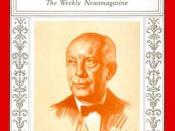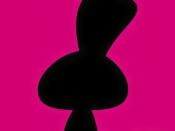The literary hero Don Juan has been portrayed by several playwrights and composers over the last few centuries. Among the works created on this subject is Richard Strauss's symphonic tone poem Don Juan. This work is one among several of Strauss's programmatic pieces. Although the work did not have a specific program written out for it, Strauss employed programmatic techniques to create the personalities of the characters in the legend. The means Strauss used to create these personalities was developing the individual characters' melodic themes. The most obvious example of these melodies is found in the development of the secondary themes, or the "loves" themes. The secondary themes in Don Juan are lyrical contrasts to the general, majestic theme of the overall piece. This is because the themes are developed by a continually, unbroken melodious line. Strauss develops the first lyrical love theme through creative compositional strategies. One way that he accomplishes this is by extensively preparing the introduction to the theme.
The first preparation starts in measure forty-three with a change of style. Strauss used tempo and dynamics to create the style change. The heroic theme of Don Juan is still heard for a few measures, but with a rubato tempo and a subito piano. The slower tempo and softer dynamic make these measures seem more relaxed. This change in style portrays Don Juan less as a hero and more distracted by his first love. Strauss additionally prepares the theme by foreshadowing it in measure forty-six and forty-seven. These two measures state the melody of the theme once in the woodwind voices. This clues the listener into what may be expected next. This foreshadowing creates a smooth transition into the first love theme, easing us into it. Strauss prepares the theme in these ways and then uses several...


